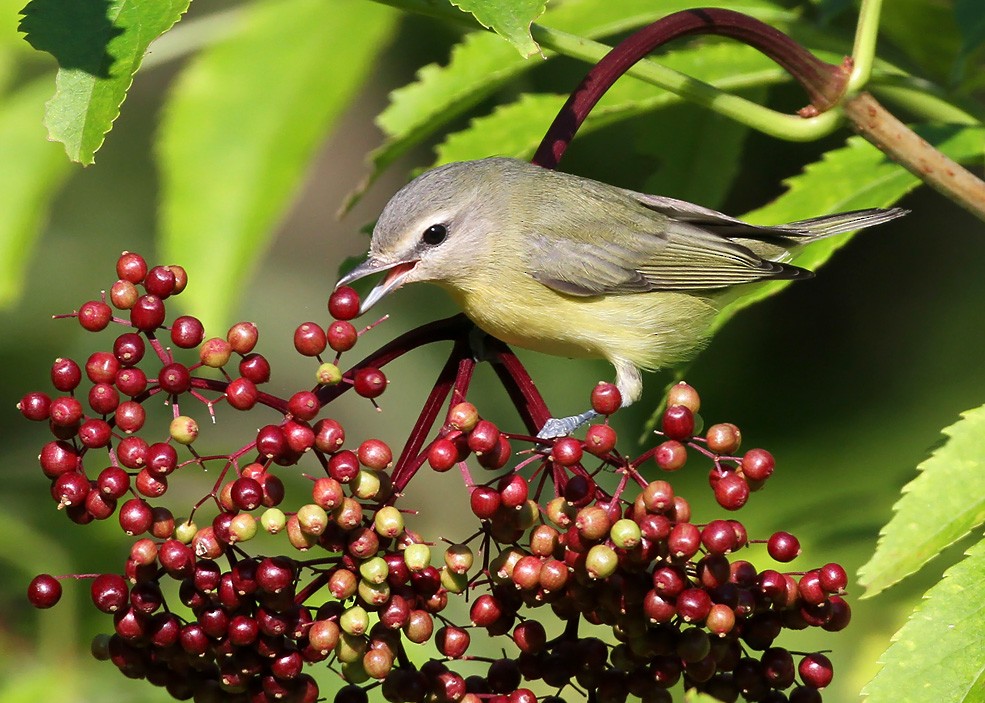Now that we’ve got all priority blocks complete, we’ve been already getting questions about what comes next, so here are some answers to some Frequently Asked Questions!
Q: Should I continue atlasing?
A: For the remainder of the 2019 season you can continue to submit relevant sightings as you come across them, although we expect active atlasing to be tapering off. We have now reached the time of year where migrants will begin to dominate and even your local birds are moving around, so caution is warranted! Adults feeding young are fair game, but from this point forward, use of lower codes is discouraged. Refer to the Breeding Guideline Bar Chart as needed. Some species known to nest late in the year include American Goldfinch, Cedar Waxwing, Mourning Dove, Rock Pigeon, Wild Turkey, and Northern Cardinal.
Remember as we head out of the breeding season, checklists with breeding codes go into the atlas portal, and checklists with no breeding codes go into regular eBird.
Q: What if I have a backlog of data?
A: if you have a backlog of data, get it in now! You can submit any records you have spanning dates from January 2015 to December 2019. We will not be accepting any sightings from 2020 forward as the atlas period will be over, and at some point late in 2019 we will close down the data entry.
Q: What about keeping the atlas going indefinitely?
A: We’ve heard suggestions that people would like to keep the atlas going indefinitely including between this atlas and the 2035 WBBA III. However, the atlas takes a lot of coordination to run, there is a lot of breeding-code vetting that needs to happen, block lines are important to running an atlas, and part of the usefulness of an atlas is comparison between one 5-year period and the next 5-year period. For those reasons, it’s not feasible to keep all of the atlas infrastructure in place between atlases. It is encouraged to continue to use breeding codes in eBird, particularly for the higher codes or notable sightings, and minimize the distance of your traveling counts to provide more precise, useful observation data.
Q: What happens next for the atlas?
A: The team at Atlas Central will be very focused on data review over the next 6 months to a year. With hundreds of thousands of records, we will need to review the data for breeding codes, dates, locations, and species, checking it in a variety of ways. We are eagerly awaiting a few new developments from eBird which will assist in this process. At some point we will be inviting the original observers and local experts to help us with data review, but we’re not here yet, stay tuned!
Q: How will atlas results be displayed?
A: We will be publishing atlas results in a book, just like the first Wisconsin Breeding Bird Atlas. It will take several years to prepare the atlas data, the point count data, generate maps and models, and write species accounts and other chapters. We will plan to have some portion of the results, at least the maps, continue on eBird going forward, although they may be down for an intervening period between data checking and book publication. Since we are the first atlas run through eBird, we still have to determine what those online results will look like. At any rate, you can look forward to a high-quality atlas book to document results, as well as online maps.
Q: What will I do with myself now that the atlas is finished?
A: Lots of people have approached us saying they will miss atlasing, and of course so will we! Discussions are ongoing about other good citizen science based opportunities to participate in, so stay tuned for possible news on that front. There are already many other excellent citizen science projects going on in Wisconsin, see the Wisconsin Citizen-Based Monitoring page for some ideas. In addition, the Great Wisconsin Birdathon, which has raised over a half-million dollars for bird conservation in Wisconsin so far, is a fun way to give your birding a greater purpose. There are 3 other eBird-run atlases currently in progress: Virginia (ends 2020), Maine (ends 2022), and New Zealand (ends 2023), with New York and Maryland coming to the Atlas eBird family soon. Connecticut (ends 2020) and Saskatchewan (ends 2021) are running atlases outside of eBird. Aside from all that, keep eBirding, and stay in touch with the Wisconsin birding scene like the folks at the Wisconsin Society for Ornithology, or your local bird club or nature center.



